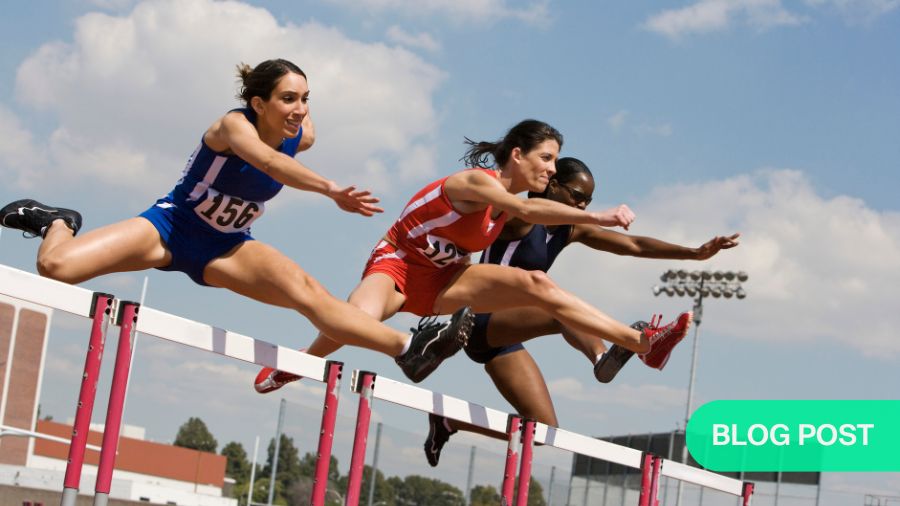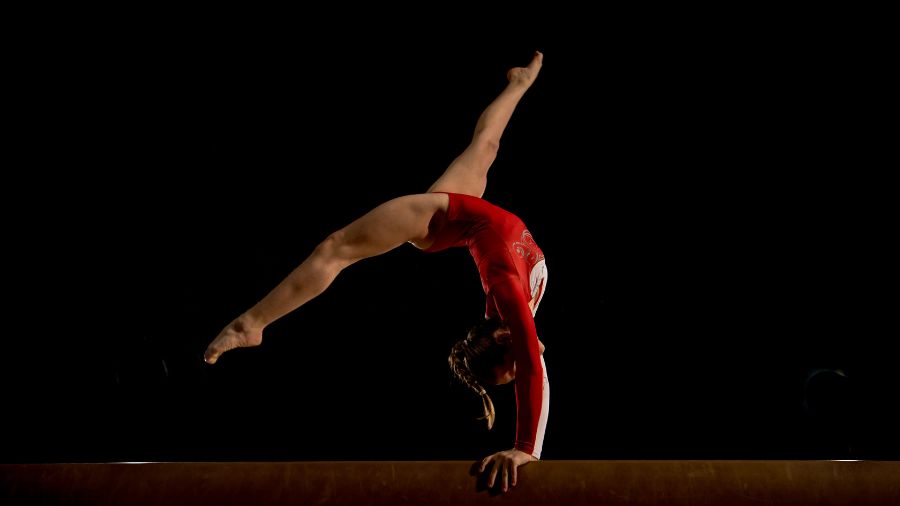Understanding the differences between male and female athletes in the treatment of sports injuries
BY DR KAREN SUTTON AND DR MIHO TANAKA

Disclaimer: The article represents the opinion of individual authors exclusively and not necessarily the opinion of AO or its clinical specialties.
Across the world, there has been an explosion in the number of girls and women engaging in sports traditionally considered male pursuits. Unsurprisingly, this has also led to a rise in new sports-related injuries. Doctors and surgeons need to be aware that, when it comes to treatment and prevention, the sexes are not the same.
Not so very long ago, in the US at least, doctors and PHDs considered it unethical to do medical research on women. Thankfully those times are past and nowadays many journals won’t even publish research unless its divides up the sexes and includes data on gender discrepancies. However, it remains a fact that historically, we haven’t had the kind of research on women in sports that we’ve had on men.
Things are undoubtedly getting better, not least because of the increased number of women participating in once male-dominated sports—American football, Australian Rules football, soccer, rugby, basketball, wrestling etc.—and the resultant rise in sports injuries. At a collision sports meeting in Stockholm in 2019, one Aussie Rules football coach was staggered at the number of his young female players who were falling victim to anterior cruciate ligament (ACL) injuries. Indeed, research has shown that young female basketball players are eight times more likely to suffer ACL problems than their male counterparts of a similar age.
The knee is not, of course, the only source of sporting injuries in women but it has a high incidence factor and if we are going to properly treat such injuries (or better still, prevent them altogether), we need to be aware of certain factors that are critical to female athletes.
Muscle mass and hyperlaxity
Before boys and girls hit puberty, their injury risk is similar. They have the same bone strength, same hormone levels, same muscular strength. Things really start to change at puberty when boys start producing testosterone and girls begin producing estrogen, progesterone, and other hormones.
The difference with boys is that testosterone production also helps to grow the muscle mass they need to keep up with the demands put on their bodies. Girls do not grow muscle mass as quickly—particularly in the quads, hamstrings, and glutes—so they must work much harder to gain muscle mass through strength, conditioning, and performance training.
Another factor is that girls tend to develop muscles asymmetrically (for example, they’re often more dominant in one leg than the other), whereas boys tend to develop muscles equally. This means that girls can be more imbalanced than boys when it comes to performing tasks and sports. Also, girls tend to be quad dominant. Their quads are stronger than their hamstrings, but it is the hamstring that is most protective of the ACL.
And in general, women’s core strength simply isn’t as strong as men’s, yet core muscles such as the abs and glutes are key for injury prevention because they allow the body to react in time and can absorb some of the stress that’s going through the knee. Obviously as athletes get older there is not so much of a shock to the system anterior cruciate ligament but there are still differences in muscle mass between the genders.
Those muscle imbalances make the knee particularly vulnerable to injury, especially in sports that require a lot of pivoting and cutting, but other joints are also susceptible. Instability in the ankle causes lots of problems. Girls and women have much more hyperlaxity (looseness of the joints) than men, and this is where the hips and shoulders come into play. We see a lot of hip dysplasia in ballerinas and gymnasts. They have super flexible hips which can cause problems within the hip structure—labral tears in hips (and shoulders) are common in female athletes who have increased flexibility.
Hormonal Impact
The effects of hormone change on female performance should also not be underestimated. They affect not only muscle density but also bone density and reaction time. In fact, research has shown that women’s reaction times in general are strongly influenced by where they are in their menstrual cycle—usually slower around ovulation—which is important in sports such as tennis.
Another factor that comes into play is relative energy deficiency syndrome (RED-S), which has a much higher occurrence in female athletes than in males. It’s basically that many young women are not getting the level of nutrition required for their sport. We’re not talking bulimia, anorexia or other eating disorders – it’s simply that they underestimate (or don’t have access to) the nutrition they need. Sometimes this can simply be a matter of, say, college canteens not being open after athletes have finished their practice, so they are not properly refueling.
RED-S leads to complications such as lower bone density, a disrupted menstrual cycle, even hip stress fractures (a devastating injury that can put you off your feet for a considerable time.) We’ve seen it a lot in female mid-field soccer players, for example, where they are running the equivalent of six miles every game and don’t realize they are not consuming enough calories, or the right kind of calories, to compensate for that level of activity.
Sports such as figure skating or gymnastics also have an added appearance-related factor. Female athletes are more attuned to what their bodies look like. They want to perform well but they also want a slimmer appearance which may account for a higher incidence of RED-S in female competitors – even in sports such as cross-country running where being a lower weight benefits both sexes.
Bone health and nutrition are directly related to the regulation of hormones. If you’re not getting appropriate hormone levels, your bones are not being protected.
Prevention strategies for ACL injuries
Luckily, we have a lot of data now that shows some very simple exercises regularly performed 20-30 minutes three times a week can prevent many ACL injuries. There’s a lot that female athletes themselves can do but—and this is a problem across the globe—there is already a huge amount of demand on them in terms of performance, in terms of practice, even in terms of travelling. To incorporate those 20-30 minutes of agility drills may seem to normal people a small price to pay to prevent serious injury, but because the performance benefits are not always obvious it often doesn’t fit in with the coaching mentality. Unfortunately, many of them believe they’re not The One, that it can’t happen to them. Until it does.
We’re also doing research right now at the Hospital for Special Surgery looking at footwear, particularly the cleat/stud-surface interface. In every sport we need to ask whether athletes are wearing the right cleat for the right surface. In rainier countries, for example, there has been a marked rise in the use of artificial turf and no two artificial surfaces are the same. The filling, the length of the turf, and the grip are all different—so how can one shoe or cleat really be appropriate for all of them?
The first question we usually ask when a girl tears her ACL is: “What were you wearing?” because most of the time they tear it on a turf field. We are starting to educate patients but unfortunately that’s usually retroactive. So, our research now has athletes go through a pivoting, cutting drill, where we look at the force plates, analyze the angles of the hip, knee, and foot and compare an aggressive cleat versus a shorter, stubbier one.
In certain sports too, the younger athletes start the better. Firstly, to build up muscle memory, but also to get accustomed to how their bodies respond to sports in general. Not all sports require that but for activities such as baseball, gymnastics, and skiing, it’s a definite plus to start young. But even playing Four Square or kickball as a kid, where you’re suddenly sprinting 100% and reacting to the ball, that is a great basis and is still going to help if you later take up whatever kind of football.
The advent of real-time data
One of the biggest sporting advances in recent years, and one which will have a huge impact on women’s sports in the coming years, is that we’re now able to capture real-time data. Wearable devices mean we don’t have to postulate what is happening on the field—we can now access heart rate data, speed data, and load data and measure athletes’ angles so we really know how hard we are pushing them.
But there are other coordinating factors that we don’t always think about such as athletes’ mental health, or whether they’re getting enough sleep to fully recover, whether their nutrition is enough or suitable for their chosen sport, or how their menstrual cycle affects their mental and physical performance. At the moment we measure all of these separately and it would be great to put all those variables in with the wearable data to get the full picture. And we also need to listen to female athletes themselves. It feels like current research is passively looking into their lives and there is a real need to have their active input.
Like men, female athletes are tough and determined and often push themselves to breaking point. We’re not going to change that mentality, we’re not going to change the sports and we can’t change the demands placed on them. But we can factor in the female anatomy, the female neural response and female muscular asymmetry to ensure these women don’t suffer needless injury or, when they do, quickly get them back on their feet and back doing the sports they love. Musculoskeletal sports injuries, such as sprains, strains, fractures, and dislocations, affect both men and women, but differences in anatomy, physiology, and biomechanics create gender-specific risk factors and treatment strategies. Understanding these differences is crucial for personalized and effective treatment plans.
Risk Factors:
Anatomical differences: Women generally have a wider pelvis, which alters the alignment of the lower limbs and can increase the risk of knee injuries, particularly anterior cruciate ligament (ACL) tears. Men, on the other hand, often have greater muscle mass and bone density, making them more prone to muscle strains and fractures.
Hormonal influences: Estrogen, which fluctuates during the menstrual cycle, affects ligament laxity in women. This may increase the risk of joint injuries, particularly during phases when estrogen levels are high. Conversely, men have higher testosterone levels, which promotes muscle mass, potentially increasing the likelihood of overuse injuries like tendinitis.
Biomechanics and movement atterns: Men and women move differently due to variations in muscle recruitment and joint mechanics. Women often display greater knee valgus (inward collapse of the knee) during activities like jumping or cutting, increasing their risk of ACL injuries.
Treatment Strategies:
Rehabilitation: Gender differences are considered in rehabilitation, as men may require programs focused more on regaining muscle strength, while women may benefit from exercises targeting neuromuscular control to prevent joint instability. Core stability and lower limb alignment are emphasized for women to reduce reinjury rates.
Injury prevention: Women-specific injury prevention programs often focus on strengthening the quadriceps and hamstrings, improving balance, and correcting movement patterns to lower the risk of knee injuries. For men, injury prevention may emphasize flexibility and mobility to counteract muscle tightness.
In conclusion, gender-specific risk factors and treatment strategies in musculoskeletal sports injuries highlight the importance of tailored approaches to enhance recovery and prevent reinjury.
About the authors:
You might also be interested in:
AO Sports
AO Sports provides gold-standard AO education on the surgical treatment of sports injuries and other soft-tissue conditions around the joint. Focus on knee and shoulder injuries and deformities.
AO Davos Courses
AO Davos Courses offers unparalleled opportunities for the professional development and personal growth of surgeons, including and advanced course on knee injuries and deformities with Miho Tanaka and Karen Sutton in 2024.
Patellofemoral syndrome
The catch-all diagnosis for anterior knee pain often oversimplifies the problem and delays accurate treatment. John Fulkerson emphasizes the importance of thorough physical examination and advanced imaging technology.







